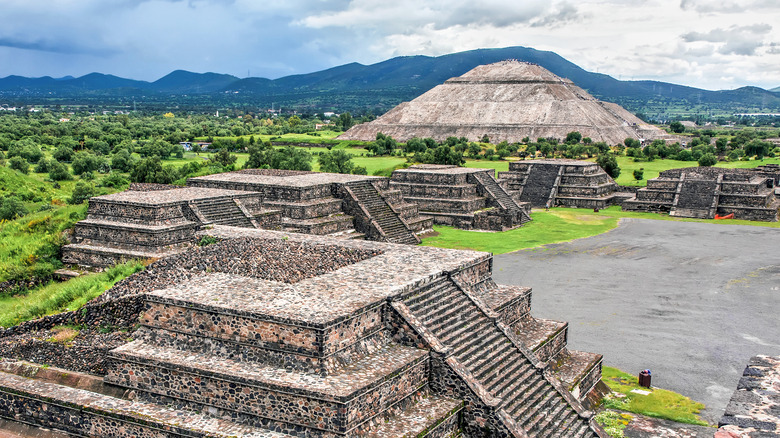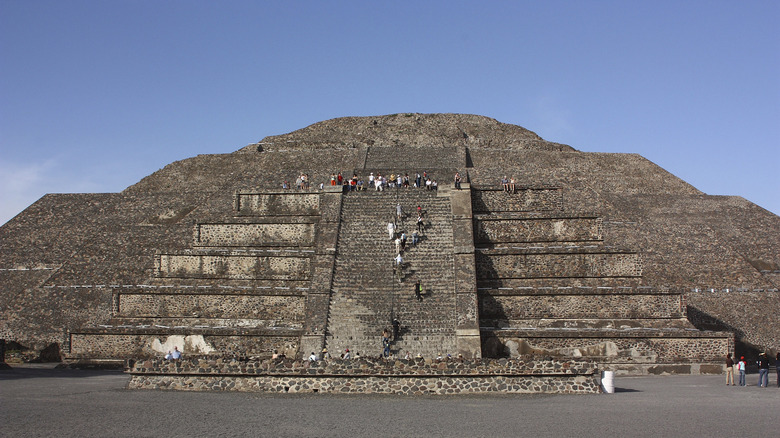What's In The Secret Tunnel Found Under This Ancient Pyramid?
The Aztecs came to Mesoamerica, now Mexico, sometime in the early 13th century, probably hunter-gatherers from a northern tribe, according to History. When they arrived, the Pyramid of the Moon waited for them, a remnant from the area's previous inhabitants, said Mexico Archeology. The structure sat on an elevated area and featured a complex with 12 pyramid platforms that surrounded a concourse, known as the Plaza of the Moon, and its altar. The Pyramid of the Moon, the ancient city of Teotihuacan's first large development, was constructed in the first century and subsequently covered by another pyramid some seven times to increase its size to 150 feet with a base of 550 feet.
The Pyramid of the Moon sits about 30 miles northeast of Mexico City and had a gruesome history of sacrifice, according to Historical Mexico. The temple is believed to pay homage to the Great Goddess of Teotihuacan, a deity for water, fertility, and creation. Teotihuacan, once an urban center containing a population it is thought of about 100,000 people. The main thoroughfare, called the Avenue of the Dead, was a two-mile strip where three major pyramid complexes resided, including the Pyramid of the Moon, The Pyramid of the Sun, and the Temple of the Feathered Serpent. For thousands of years, the Pyramid of the Moon also hid a secret: a tunnel similar to the one that an archaeological group found in 1971 under the Pyramid of the Sun, the largest structure in Teotihuacan, reported Live Science.
The tale of the tunnels
The Pyramid of the Sun's tunnel yielded little, according to Live Science. The archeological team discovered its entrance close to the Avenue of the Dead. When they excavated it, they found a cloverleaf-shaped room already looted by ancient thieves. It was thought that the hidden chamber had been used for rituals. Another 330-feet tunnel at the Temple of the Feathered Serpent, also known as the Temple of the Plumed Serpent, was also uncovered in 2003, reported Smithsonian. The space seemed to be a repository of offerings, 75,000 artifacts such as seashells, cat bones, pottery, human skin pieces, jewelry, and figurines.
The Pyramid of the Moon Project to excavate a tunnel started in 1998, reported The Vintage News. More than 150 offerings like obsidian figurines and blades, conch shells were found there along with a skeleton of a man, possibly bound, and remains of animals such as hawks, falcons, and jaguars — one might even have suffered the terror of being buried alive, said Historical Mexico. Another hidden passageway was revealed by electrical resistivity tomography, a way of looking at subterranean areas, in 2017. The people of Teotihuacan believed in the underworld and it is thought the newly found tunnel might represent that. It is not known yet what this new find might reveal (from National Geographic). It could provide "a better understanding of the meaning of the city," asserted Mexico's National Institute of Anthropology and History (NIAH) archaeologist Veronica Ortega to Science Alert.

